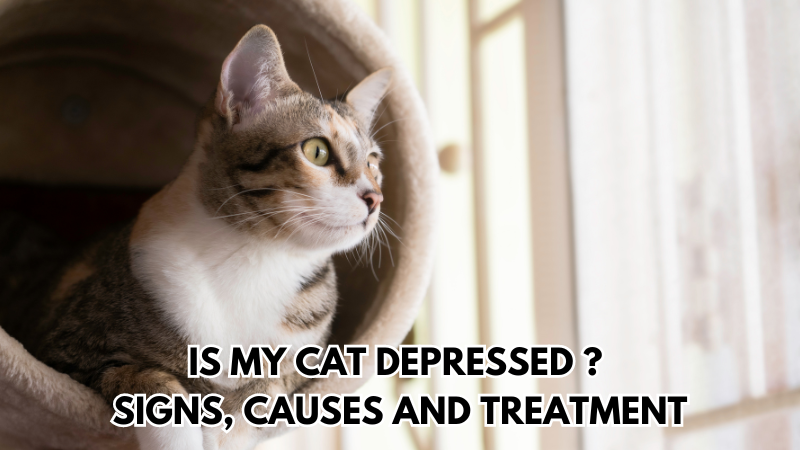You hear the sounds of hissing, growling, and thumping paws coming from the other room. Rushing in, you find your cats tangled together, swatting and biting. Your heart races, and you wonder: Are my cats fighting or just playing?
This is a common concern for many cat owners. It can be hard to tell the difference between a playful tussle and a serious fight. Understanding cat behavior is key to ensuring their well-being and maintaining a peaceful household.
In this article, we’ll explore the signs of play and fighting, how to distinguish between the two, and what you can do to manage their interactions.
By the end, you’ll feel more confident in interpreting your cats’ behavior and ensuring they coexist harmoniously.
- Signs of Play
- Signs of Fighting
- How to Tell the Difference
- What to Do if Your Cats Are Fighting
- Preventing Future Fights
- Bonus Tip
Understanding Cat Play
Cats, especially kittens and younger cats, play by mimicking hunting and fighting behaviors.
This play is crucial for their development, helping them learn important skills like stalking, pouncing, and social interaction.
Playful behavior can look intense, but there are specific signs to watch for that indicate your cats are just having fun.
Signs of Play
Relaxed Ears and Body Posture
When cats are playing, their ears are typically upright and facing forward, or they may be relaxed to the sides. Their bodies are usually loose and flexible. If you see this, it’s a good sign that they’re not actually fighting.
Taking Turns
Playful cats take turns being the “aggressor” and the “victim.” One cat may pounce on the other, and then they switch roles. This back-and-forth dynamic is a key indicator of play.
Noises
Playful cats might make some noise, but it’s usually not too intense. You might hear light growling or chirping, but it’s not constant or aggressive.
No Serious Injuries
Play fighting usually doesn’t result in injuries. If you’re not seeing any scratches, bites, or blood, it’s likely just play. Playful bites and swats are usually gentle and controlled.
Quick Breaks
Cats that are playing will often take short breaks. They might stop for a moment, groom themselves, or simply pause before resuming their play. This indicates that they’re not serious about hurting each other.

Understanding Cats Fighting
On the other hand, fighting is a serious matter.
Cats fight to establish dominance, defend territory, or when they feel threatened. These encounters can be intense and harmful.
Knowing the signs of a real fight can help you intervene before things escalate.
Signs of Fighting
Flattened Ears and Stiff Posture
When cats are fighting, their ears are typically flattened back against their heads. Their bodies are tense and rigid, indicating they’re on high alert.
Noisy and Aggressive Sounds
Fighting cats make loud, aggressive noises. Hissing, growling, and yowling are common. These sounds are a clear sign that the interaction is not friendly.
Chasing and Cornering
In a fight, one cat might chase the other and try to corner them. This behavior shows that one cat is trying to dominate or intimidate the other.
Intense Biting and Scratching
Fighting cats use their claws and teeth with full force. If you see deep bites, scratches, or fur flying, it’s a sign that they’re fighting, not playing.
No Breaks
Fighting cats are relentless. They won’t take breaks or switch roles. The encounter will continue until one cat submits or escapes.
How to Tell the Difference
It can be tricky to tell if your cats are fighting or playing, but watching their body language and behavior closely can give you clues.
Here’s a quick checklist to help you decide:
Ears and Posture
Are their ears relaxed or flattened? Is their posture loose or tense?
Noises
Are the noises playful and light, or loud and aggressive?
Role-Switching
Are they taking turns, or is one cat always the aggressor?
Breaks
Are they pausing and taking breaks, or is the encounter continuous?
Injuries
Are there any visible injuries?

What to Do if Your Cats Are Fighting
If you determine that your cats are fighting, it’s important to intervene safely. Here are some steps you can take:
Stay Calm
Your reaction can influence your cats. Stay calm and avoid yelling or making sudden movements.
Separate Them Safely
Use a barrier like a piece of cardboard or a blanket to separate them. Never use your hands, as you might get hurt.
Give Them Space
Once separated, give each cat their own space to calm down. This could mean separate rooms for a while.
Identify Triggers
Try to identify what triggered the fight. Is it a territorial issue, a new pet, or something else?
Reintroduce Slowly
If your cats need to be reintroduced, do it slowly and gradually. Use positive reinforcement and create positive associations with each other.
Preventing Future Fights
Preventing fights is key to maintaining harmony in a multi-cat household. Here are some tips to help:
Provide Plenty of Resources
Ensure each cat has their own food, water, litter box, and sleeping areas. This reduces competition and territorial disputes.
Create Vertical Space
Cats love to climb and perch. Provide cat trees, shelves, and other vertical spaces to help them establish their own territories.
Play and Exercise
Engage your cats in regular play and exercise to help burn off excess energy and reduce tension.
Bonus Tip: Monitor Their Interactions
Keep an eye on your cats’ interactions, especially if there’s a history of fighting. Early intervention can prevent fights from escalating. If you’re unsure, consult with a veterinarian or a professional animal behaviorist for guidance.
Read: How to Tell Your Cat ‘I Love You’ ?
Cats have complex social dynamics, and occasional disagreements are normal. However, with patience and careful observation, you can help your cats coexist happily.
Remember, a harmonious multi-cat household takes time and effort, but the reward is a loving and peaceful environment for you and your feline friends.***
Watch Videos about Cat & Kitten Care on Youtube @naowthecat